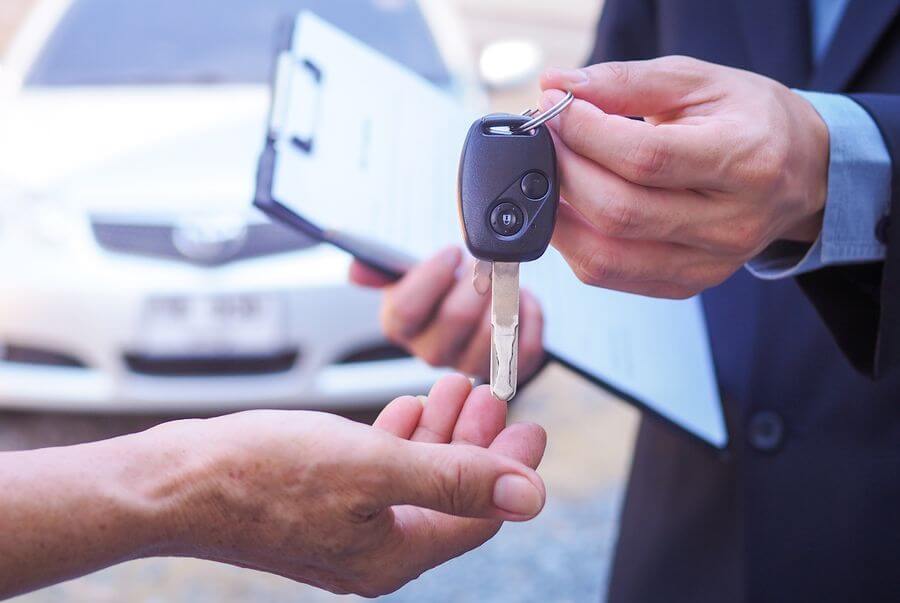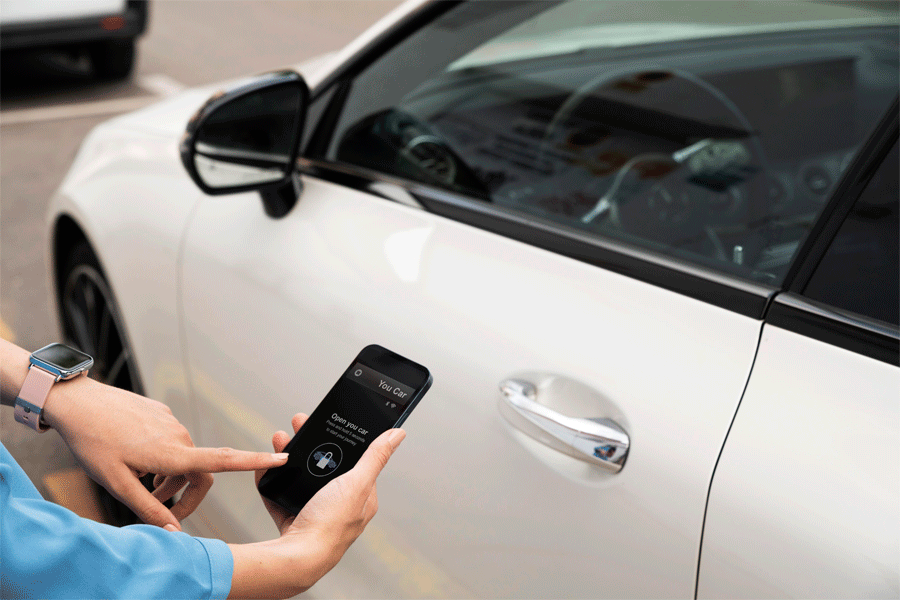One of the most crucial identification numbers for a motor vehicle is the Vehicle Identification Number (VIN). It acts as a serial number to confirm the identity of the specific vehicle and ensure that it has not been stolen when registering it. In most states, it is required when applying for registration, especially for out-of-state vehicles, and must be signed.
As this 17-digit number is a fundamental legal code, it must be verified adequately during registration. This article will discuss everything you should know about VIN verification, when it is necessary, and specific proceedings in the State of Vermont.
VIN Verification
When registering an out-of-state vehicle in the State of Vermont, applying for a VIN is required. This 17-digit number confirms that the car is correctly owned by the registrant and has not been stolen. Some states may also request an oath to be signed, confirming the lawful possession of the car.
The VIN is a code applied to every vehicle by the manufacturer. It guarantees the identification of a specific vehicle, meaning each car will have its unique code. It is composed of a string of letters and numbers but does not contain spaces or the letters Q, I, or O to avoid confusion. The different sections of this code contain information regarding the year, country, and factory where it was made, as well as the brand and model. Typically, these codes are produced in a single continuous line.
While now all codes are 17 digits long, cars made before 1981 had varying VINs, from 11 to 17 digits. While VIN codes identify a motor vehicle, a Hull Identification Number (HIN) is a similar concept that identifies a motorboat with a string of 12 or 14 characters.
This information is essential to provide a proper vehicle identification number verification. However, if an applicant does not need a title, then the VIN verification isn’t required.
Free Templates
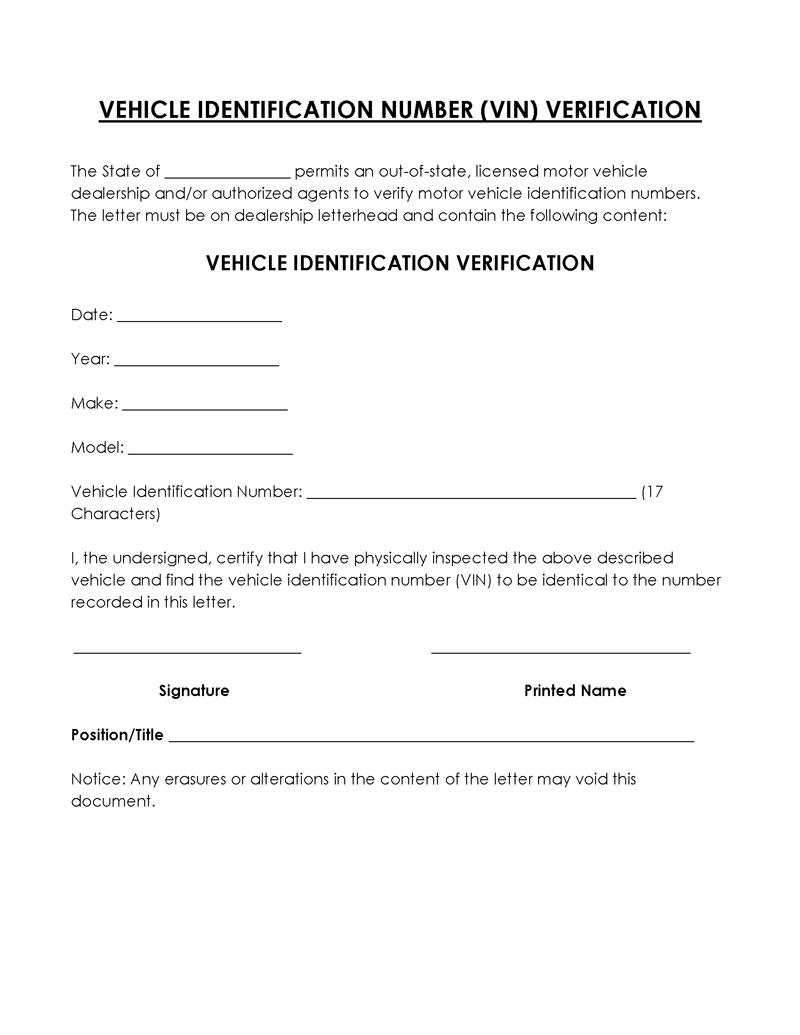
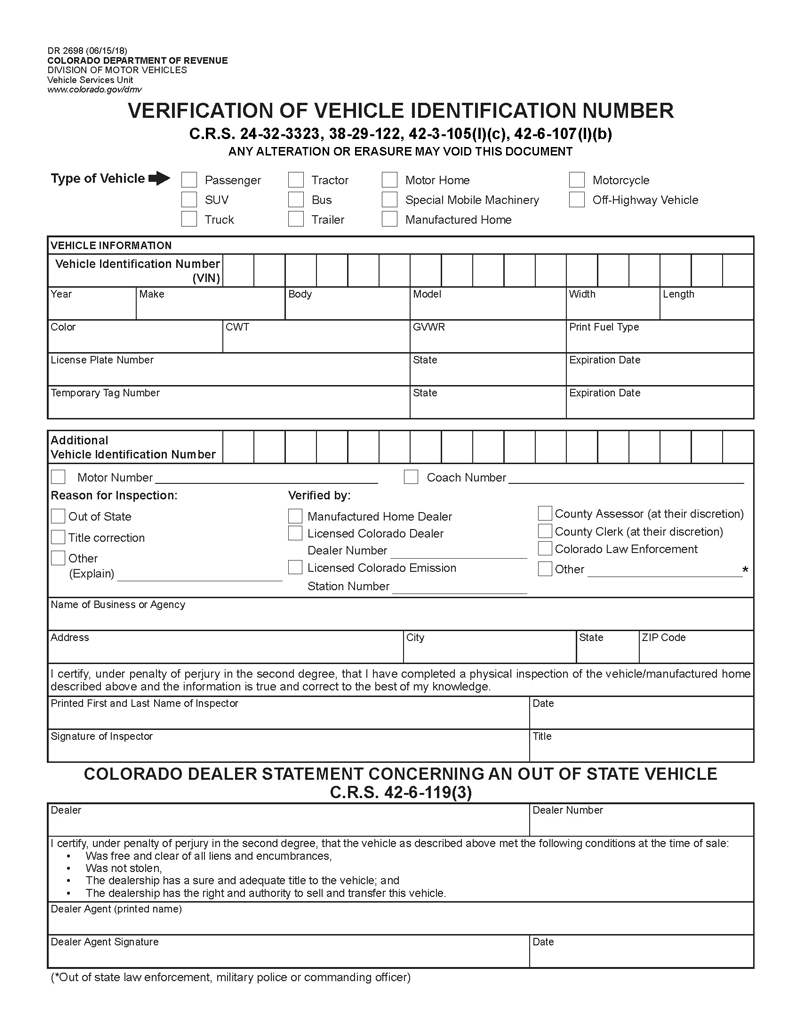
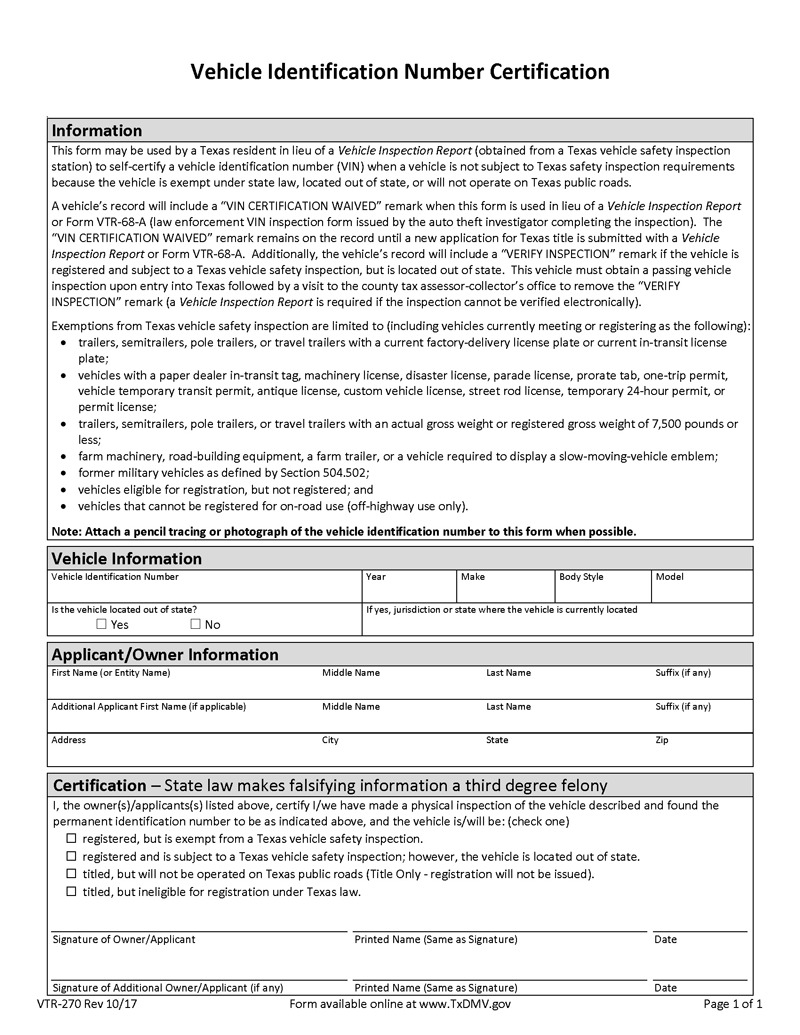
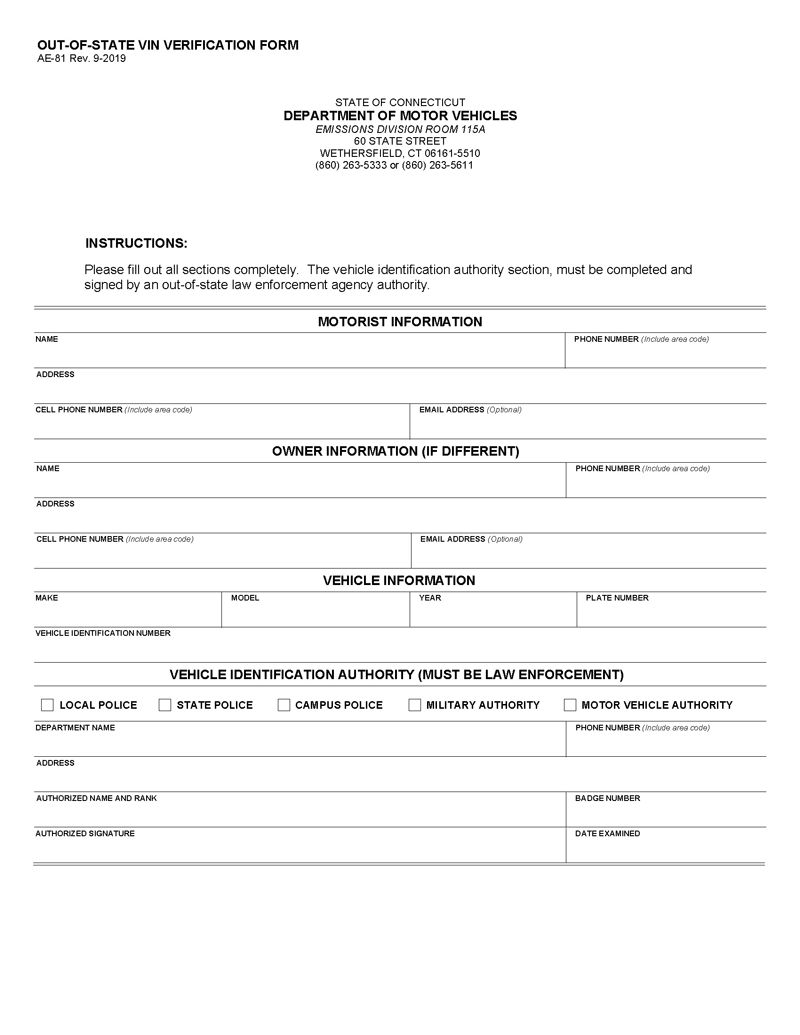
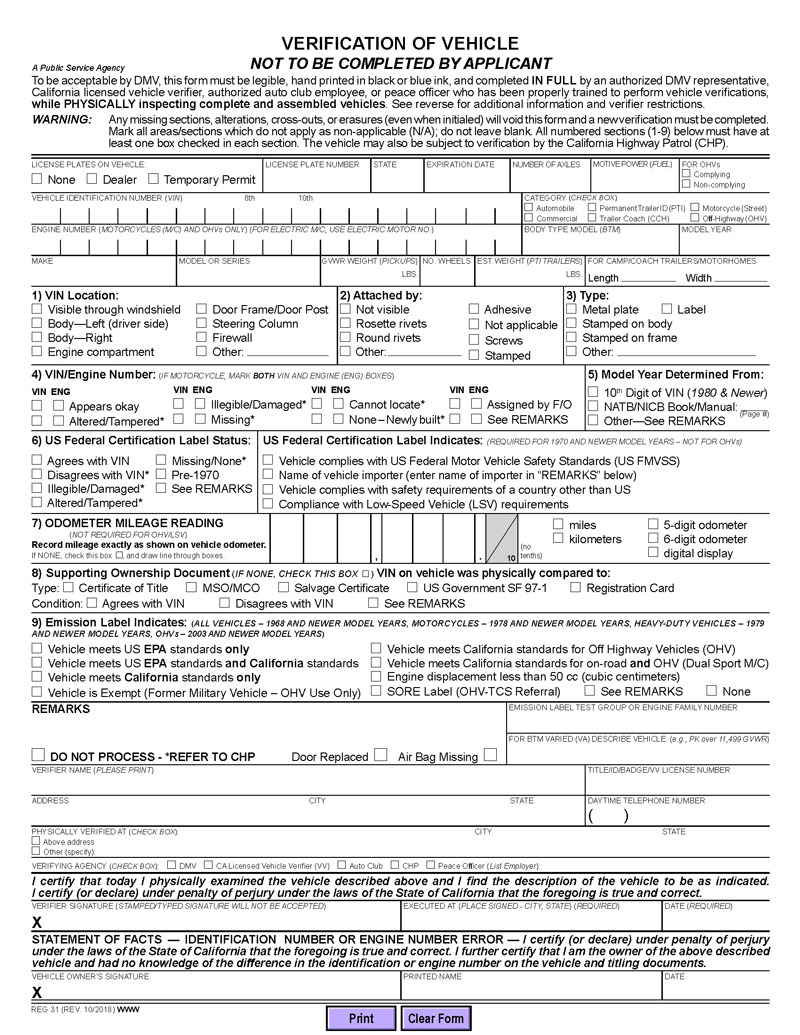
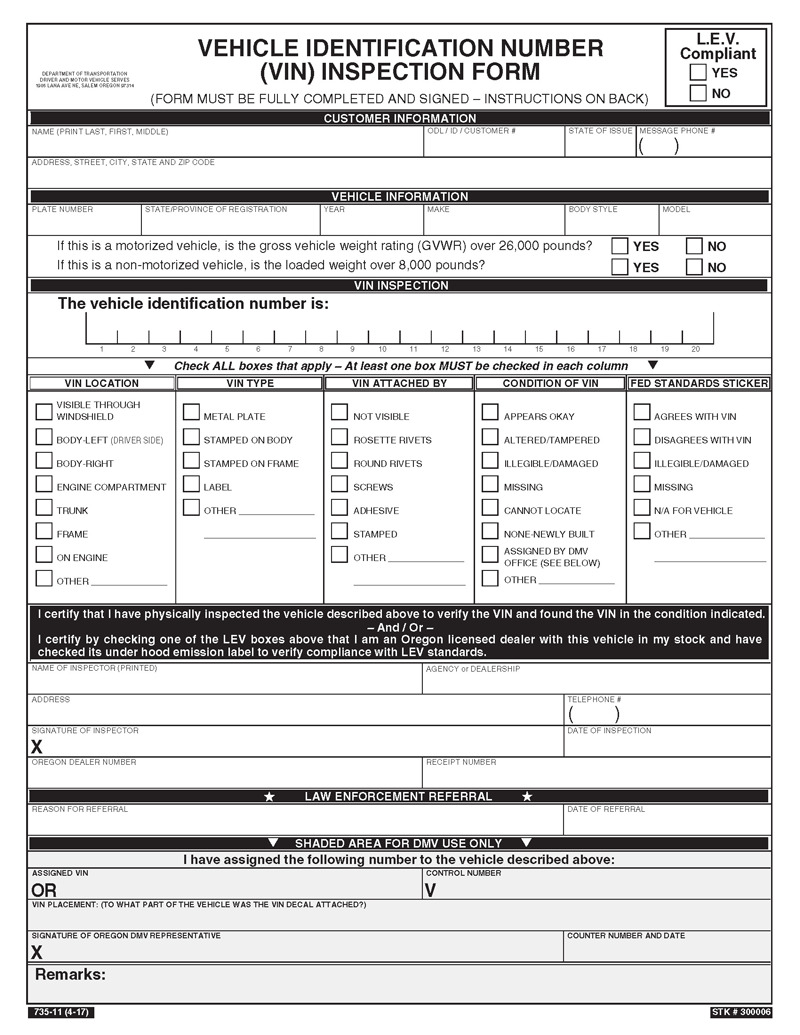
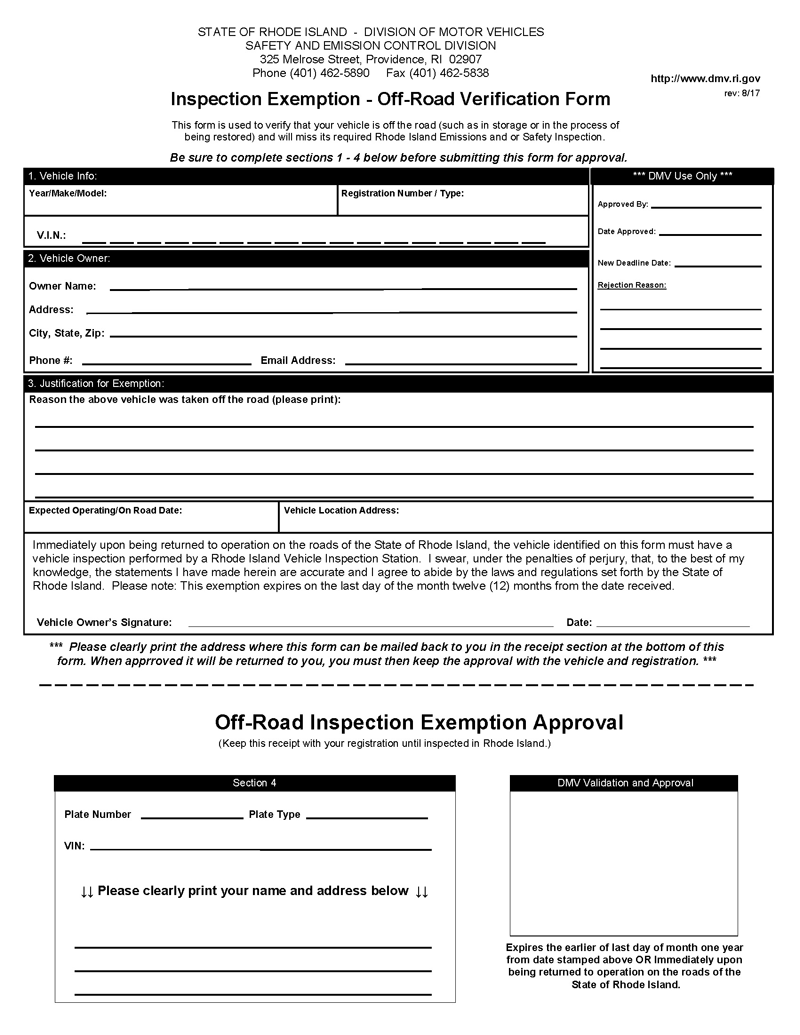
States Where It is Required
Rules regarding motor vehicles vary according to state. Therefore not every state will have laws requiring a VIN verification form. In addition, the process may differ in each state, as some require an oath to be signed, while others need the verification form.
As of 2022, the following states require some VIN verification:
- California – Form REG-31
- Colorado – Form DR 2698
- Connecticut – Form AE-81
- Florida – Form HSMV 82042
- Idaho – Form ITD 3403
- Indiana – Form 39530
- Kansas – Form TR-65
- Kentucky – Form TC 96‐229
- Maine – Form MVT-10
- Nevada – Form VP15
- New Mexico – Form MVD-10705
- Oklahoma – Form 701-6
- Oregon – Form 735-11
- Pennsylvania – Form MV-41
- Rhode Island – VIN Check Form
- Vermont – Form VT-010
- Washington – Visit Inspection Station
- Wyoming – Form MV-300A
Importance
VIN codes are a beneficial record both for the state and the owner. An owner or potential buyer may want to check a vehicle’s VIN to look up the vehicle’s history. As the vehicle’s history is typically recorded in national databases, you can find information about previous owners and any significant accidents or repairs.
Likewise, it can also be helpful for the owner to access the VIN to find out if the manufacturer has issued a recall on that specific vehicle. This way, the owner can make sure proper repairs will be made.
It’s also valuable for government and state officials to access vehicle history. For example, law enforcement agents can use VIN verification to ensure that a vehicle is lawfully owned and has never been stolen.
When is Vehicle Identification Number Verification Required?
A VIN verification may be required in many circumstances, depending on the state. For example, six primary situations require a verification process in the State of Vermont.
- If the vehicle has been previously salvaged, then the verification form needs to be presented
- Any vehicle being held under a bond should also pass a verification check
- All vehicles that are registered in any foreign country
- Vehicles that are more than 15 years old, specifically when a resident is applying for an Exempt Title
- Any motor vehicles that cannot be given a title but are still more than 500 ccs and, at the same time, have not been previously registered to the applicant
- Any vehicles that have never been previously registered in the State of Vermont
Exception
If the Department of Motor Vehicles cannot physically examine the vehicle forVIN verification of U.S. Servicemen or Vermont resident applicants, an exception may be made. In addition, the Chief Inspector’s office may authorize a 3rd party to verify. This may be a separate agency or individual, depending on the discretion of the Chief Inspector.
If there are any discrepancies in the forms or the VIN itself, the DMV Chief Inspector may request an additional VIN verification.
note
It is always recommendable to use the official forms provided by the state. However, most of the time, the DMV office will also allow a standard template form to be used.
Where to Find the VIN on a Vehicle?
Most of the time, the VIN code is located on the driver’s side dashboard. Therefore, the best way to read the number is by looking into the dashboard outside the car. Likewise, the number is often located on the side of the driver’s door near the latch.
It is typically located on the neck, right below the handlebars for motorcycles. However, sometimes it can also be found on or near the actual motor, depending on the make and model of the motorcycle.
A semitrailer’s VIN is nearly always located on the front, left side. Therefore, if you cannot find the VIN for any vehicle, it should also be easily located on both the vehicle’s title and insurance information.
3 Places to check and verify VIN
As it is always advisable to undergo a VIN verification, there are several tools you can use to do so. Most tools are free to use and offer a great way to learn more about a vehicle’s history before purchasing.
The following are a few online resources that allow you to learn more about your car’s history:
NICB
The National Insurance Crime Bureau is an online national organization allowing you to find critical information about a specific motor vehicle.
It would be best if you simply used the VIN check search tool, and you’ll be able to get lots of helpful information about the vehicle. For example, you’ll be able to find out if it was ever reported as lost or stolen, if it has ever been salvaged, or if it was ever legally declared a total loss after an accident.
While the NICB only allows five searches within 24 hours, it’s an excellent opportunity for you to learn more about a motor vehicle before purchasing.
Vehicle history
Another free option, Vehicle History, gives you lots of helpful information about a vehicle, going beyond what the NICB allows.
With the free tool, you’ll be able to find information about:
- Fuel efficiency
- Cost to own
- Vehicle owner data
- Sale history
- Recalls and warranties
- Price prediction models
This is one of the best tools if you’re in the market to purchase a new vehicle and you’d like to know more information about this specific vehicle.
ISeeCars
This website is also another completely free VIN checking tool. You’ll be able to obtain a detailed car history report by simply entering the code.
Just like the previous example, you’ll be able to learn information about the price and the best times to buy or sell a vehicle, as well as other economic factors that may be useful to you.
How to Decode the VIN?
These 17-digit codes are not entirely randomized but have a specific meaning. Therefore, you can decode VINs to learn critical information about the number itself.
For 17-digit codes, the sequence of numbers gives you the following pieces of information:
- The first number indicates the country of origin
- The second and third characters can tell you who manufactured the vehicle, as well as their division
- The fourth to eighth characters give specific information about the vehicle, as well as its safety and engine type
- The ninth character is simply a manufacturer’s security code
- The 10th character will tell you the vehicle’s year
- The 11th character is the identifier for the specific assembly plant
- The 12th to 17th characters are the specific number that identifies your vehicle, based on the plant
By combining all of these different sequences of information, the VIN code allows you to have a firm grasp of all of the essential pieces of information regarding the vehicle. In addition, you can observe a VIN verification sample to check your knowledge of each section.
VIN Verification
Typically, the vehicle identification number verification is carried out by authorized personnel when applying for a vehicle title. In some states, this is simply a verification form of an oath that must be signed, whereas, in other states, a physical examination must be carried out.
The rules and regulations for each state should be checked accordingly to ensure you are prepared when going to the DMV office.
Vermont
In Vermont, VIN verifications are typically carried about by a law enforcement official or DMV employee to whom the Vermont Commissioner of Motor Vehicles qualifies. However, law enforcement offices may also employ a third party authorized to carry out verification, as long as they are under the direct supervision of an officer.
Out of state
While each state has its own rules and regulations, VIN verifications are typically carried out by officials from the Department of Motor Vehicles. In many cases, they may also be performed by state law enforcement officers or authorized parties.
If a military member needs a VIN verification, it may be performed by a base’s Commanding Officer or Provost Marshal. When this verification process is completed, an accompanying letter must be provided with the department or agency’s official letterhead. Afterward, this letter must be approved by the Vermont Commissioner of Motor Vehicles.
Final Thoughts
A VIN code is an essential information that can identify a specific motor vehicle. This unique code allows citizens and law enforcement officials to register and track a motor vehicle, ensuring its lawful status and safety history. In addition, this code can be beneficial for a buyer to ensure that the vehicle has never been in any severe accidents or has a troubling history.
The VIN verification process is a simple yet crucial event that guarantees that a motor vehicle can be given a proper title and that an applicant can lawfully own it. Typically, the process involves a verification form and an official to check the number’s validity physically. While this process may seem tedious, it is ultimately for the owner’s good to carry out this administrative procedure.


